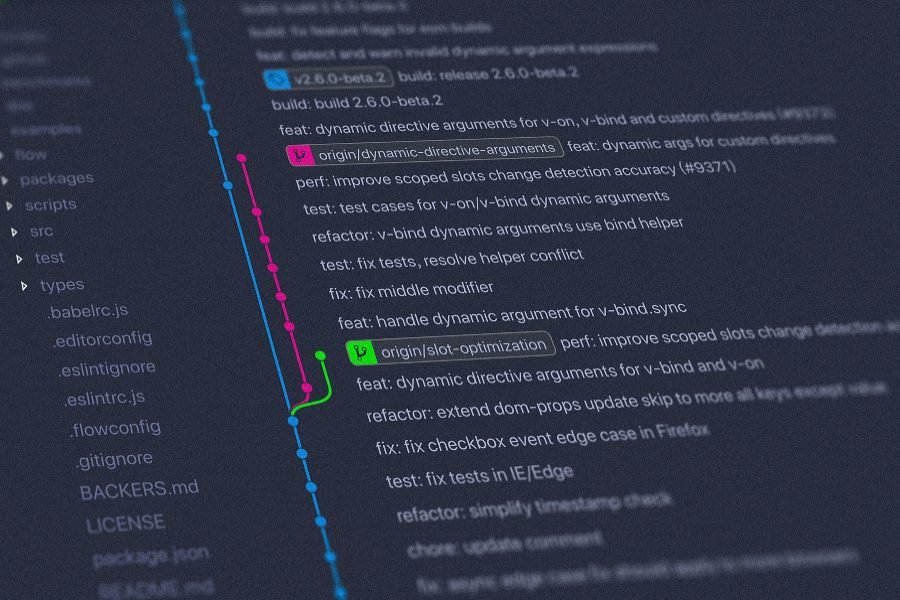
The cloud computing landscape has evolved rapidly in recent years, transforming how businesses develop, deploy, and manage applications. As organizations strive to stay competitive, they increasingly rely on cutting-edge technologies such as multi-cloud environments and edge computing. These trends are reshaping the way cloud applications are built, optimized, and delivered. In this article, we’ll explore the current trends in multi-cloud and edge computing and how they are influencing the future of cloud application development.
The Rise of Multi-Cloud Environments
Multi-cloud refers to the use of multiple cloud computing services from different providers to meet various business needs. Instead of relying on a single cloud provider, organizations are choosing to distribute their workloads across several cloud platforms—such as Amazon Web Services (AWS), Microsoft Azure, Google Cloud Platform (GCP), and others. This approach allows businesses to take advantage of the unique strengths of each cloud provider, reduce reliance on a single vendor, and enhance flexibility.
Risk Mitigation: With multi-cloud, businesses can avoid vendor lock-in and mitigate the risk of downtime or outages by spreading workloads across multiple providers. If one provider faces issues, the other platforms can maintain uptime.
Optimized Performance: By leveraging different cloud platforms, organizations can take advantage of specific features and tools offered by each provider, enhancing performance for different workloads.
Cost Efficiency: Multi-cloud strategies allow businesses to shop around for the best pricing and avoid being locked into potentially expensive contracts with a single provider.
Flexibility and Innovation: With access to different cloud platforms, businesses can experiment with new tools and technologies without being limited to one provider’s offerings.
In cloud application development services, multi-cloud strategies are making it easier to build applications that are more robust and responsive. Developers are now able to:
- Leverage the best services from different cloud providers for different components of an application, such as storage, computing, and data analytics.
- Build applications that are inherently fault-tolerant, as the workload can be distributed across multiple environments.
- Integrate services more easily, as various cloud providers are offering increasingly interoperable services and APIs.
Edge Computing: Bringing the Cloud Closer to the End User
Edge computing plays a critical role in addressing several key challenges faced by cloud-based applications. One of the most significant advantages of edge computing is its ability to reduce latency. By bringing computation closer to the source of the data, edge computing drastically reduces the time required to process data. This is essential for real-time applications, such as autonomous vehicles, smart cities, and healthcare monitoring systems, where immediate action is often required. In these cases, even a few milliseconds of delay can lead to failures or missed opportunities, making edge computing a crucial component of their functionality. By processing data locally at the edge, these applications can respond quickly to changing conditions and make decisions in real-time without the lag introduced by sending data to centralized cloud servers.
Another important benefit of edge computing is its ability to optimize bandwidth usage. When data is processed at the edge, only the necessary and relevant data is transmitted to centralized cloud servers, reducing the overall volume of data that needs to be sent across the network. This not only reduces network congestion but also lowers the costs associated with transmitting large amounts of data. With edge computing, organizations can minimize the strain on their network infrastructure and optimize bandwidth, making it more cost-effective to handle large-scale data streams, especially in environments where bandwidth is limited or expensive.
Furthermore, edge computing enhances the reliability of applications by enabling them to continue functioning even when cloud connectivity is disrupted. Since data is processed locally, applications can continue to run autonomously, without relying on a constant connection to a centralized server. This level of independence is particularly important in remote or mission-critical environments where cloud connectivity might be unreliable or intermittent. Edge computing ensures that applications remain operational during cloud outages, ensuring business continuity and reducing downtime, which is vital for maintaining consistent service delivery in industries such as healthcare, transportation, and industrial automation.
Edge computing is also shaping the way cloud applications are being developed, as developers now have to design applications that seamlessly operate both in the cloud and at the edge. One of the major trends in cloud application development is the adoption of hybrid architectures, where data is processed locally at the edge and then sent to the cloud for further analysis or storage. This hybrid approach enables applications to maintain high performance and responsiveness by processing time-sensitive data at the edge while leveraging the cloud’s computing power for more complex tasks. As more devices become interconnected, the need for real-time responses becomes even more critical, and edge computing enables these responses by reducing the time it takes to process and transmit data.
In the realm of the Internet of Things (IoT), edge computing plays a crucial role in integrating IoT devices with cloud applications. As the number of IoT devices continues to grow, the ability to respond to data in real-time becomes essential for ensuring that these devices can function optimally. Edge computing allows IoT applications to operate with low latency and make immediate decisions based on local data, improving the overall efficiency and effectiveness of IoT ecosystems. By processing data at the edge, organizations can reduce the need for constant communication with the cloud, enabling faster decision-making and reducing the potential for delays or bottlenecks.
Lastly, edge computing offers enhanced security benefits by reducing the exposure of sensitive data. With edge computing, data can be processed locally, allowing businesses to control how and when data is sent to the cloud. Sensitive information can be processed and analyzed on-site, and only necessary insights or aggregated data need to be transmitted to the cloud. This significantly reduces the risks associated with data breaches, as there is less data being transmitted across networks, and organizations have greater control over their data at the edge. By minimizing the exposure of sensitive information and ensuring that critical data is kept on-site, edge computing strengthens the overall security posture of cloud applications and ensures that data privacy is maintained.
The Convergence of Multi-Cloud and Edge Computing
The convergence of multi-cloud and edge computing is unlocking new opportunities for cloud application development, combining the strengths of both technologies to create more resilient, efficient, and scalable applications. While each of these trends offers significant benefits individually, when used together, they form a powerful synergy that enhances overall application performance and reliability.
The combination of multi-cloud environments and edge computing allows organizations to distribute workloads across multiple clouds while also placing some of those workloads at edge locations. This distribution ensures that data is processed in the most optimal place, whether in the cloud or on-premises, depending on the specific needs of the application. By making use of the most suitable location for data processing, businesses can ensure that their applications operate at peak efficiency. Additionally, leveraging both multi-cloud and edge computing offers redundancy and reliability. If one cloud provider or edge node were to fail, the application can continue functioning smoothly by automatically shifting to another available resource, ensuring uninterrupted service for end users.
Performance optimization is another key benefit that arises from integrating multi-cloud and edge computing. By using multiple cloud providers in combination with edge computing, organizations can select the most appropriate cloud provider for each specific workload. This allows for the maximization of performance by utilizing the strengths of each cloud platform while also minimizing latency by processing data at the edge. The edge, being closer to the data source, significantly reduces the time it takes for data to travel to and from centralized cloud servers, thus enhancing application responsiveness and user experience.
For software development company Techstack, this convergence creates a wealth of opportunities to design distributed applications that span multiple clouds and edge locations. By doing so, they can ensure that data is processed and stored exactly where it is most needed, improving both performance and reliability.
Emerging Trends in Multi-Cloud and Edge Computing
As both multi-cloud and edge computing continue to evolve, several emerging trends are expected to play a significant role in shaping the future of cloud application development. One of the most notable trends is the growing integration of artificial intelligence (AI) and machine learning (ML) with edge computing. As AI and ML become increasingly prevalent across industries, edge devices are becoming more capable of running machine learning models locally. This shift enables real-time decision-making at the source of the data, eliminating the need to send large volumes of information to the cloud for processing. By processing data on-site, edge devices can make intelligent decisions autonomously, without the latency introduced by cloud communication. This trend is particularly impactful in sectors such as manufacturing, healthcare, and transportation, where real-time insights and rapid responses are crucial to operations. The ability to process and act on data locally will lead to the creation of more intelligent, autonomous applications that can enhance operational efficiency and decision-making in these industries.
Another key development in the field is the rise of cloud-native edge applications. Developers are increasingly designing applications to be inherently capable of running across both cloud and edge environments. These cloud-native applications are built with containerization technologies such as Docker and Kubernetes, which enable seamless deployment and operation across diverse platforms. The containerized nature of these applications allows for greater flexibility and scalability, as they can be easily deployed on both edge devices and cloud infrastructures. This approach to development ensures that applications can adapt to changing workloads and environmental conditions, maintaining performance and reliability regardless of where they are executed. As cloud-native architectures become more prevalent, the line between cloud and edge computing will continue to blur, creating a more cohesive and integrated application ecosystem.
The ongoing rollout of 5G networks is another factor poised to significantly impact edge computing. With the advent of 5G, edge computing will benefit from faster, more reliable connectivity, which will enhance the performance of applications requiring real-time data processing. The high bandwidth and low latency offered by 5G will enable more efficient communication between edge devices and centralized cloud servers, facilitating the delivery of data-intensive applications in real time. This combination of 5G and edge computing will further accelerate the development of mobile applications, autonomous systems, and smart city initiatives. The ability to process vast amounts of data quickly and efficiently at the edge, combined with the rapid communication capabilities of 5G, will enable new possibilities in sectors such as autonomous vehicles, healthcare, and urban infrastructure. Together, these trends promise to reshape the future of cloud application development, driving innovation and improving the performance of applications across a wide range of industries.
Conclusion
The future of cloud application development lies in embracing the power of multi-cloud environments and edge computing. By utilizing multiple cloud providers, organizations can ensure flexibility, scalability, and cost optimization, while edge computing brings data processing closer to the source, reducing latency and improving performance. The convergence of these two technologies offers a compelling opportunity for businesses to build innovative, resilient applications that meet the needs of modern users.
As cloud application development continues to evolve, businesses must adapt to these emerging trends to stay competitive and deliver enhanced user experiences. By harnessing the full potential of multi-cloud and edge computing, organizations can create smarter, more responsive applications that push the boundaries of what’s possible in the cloud.
